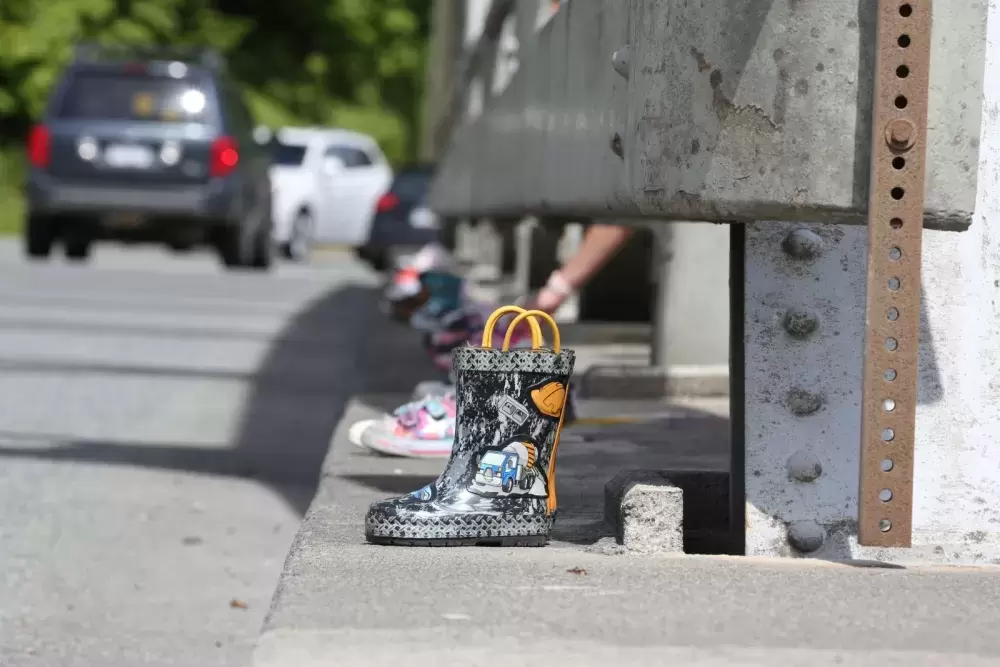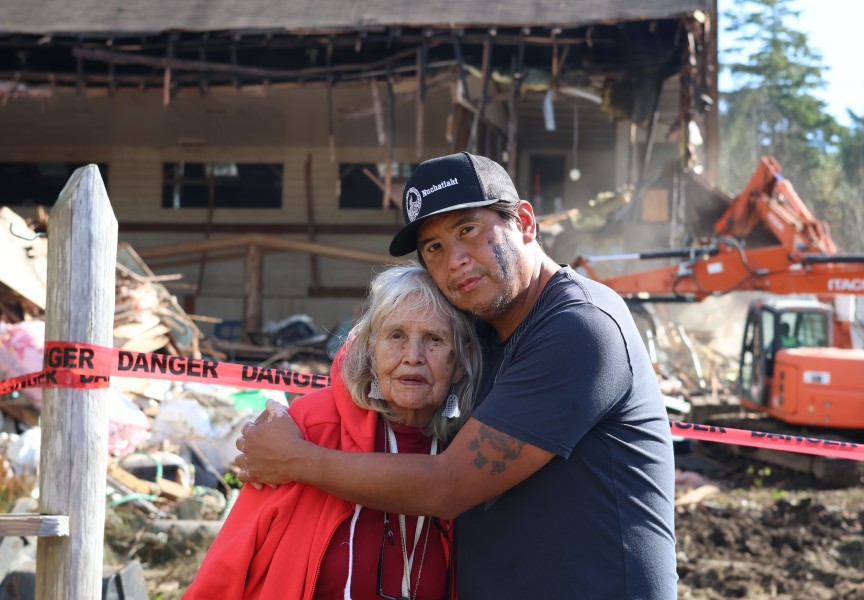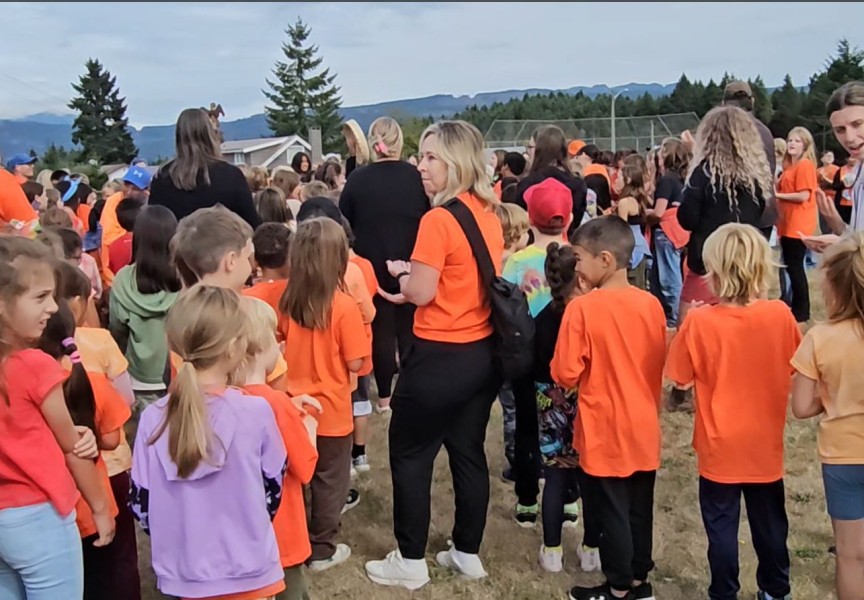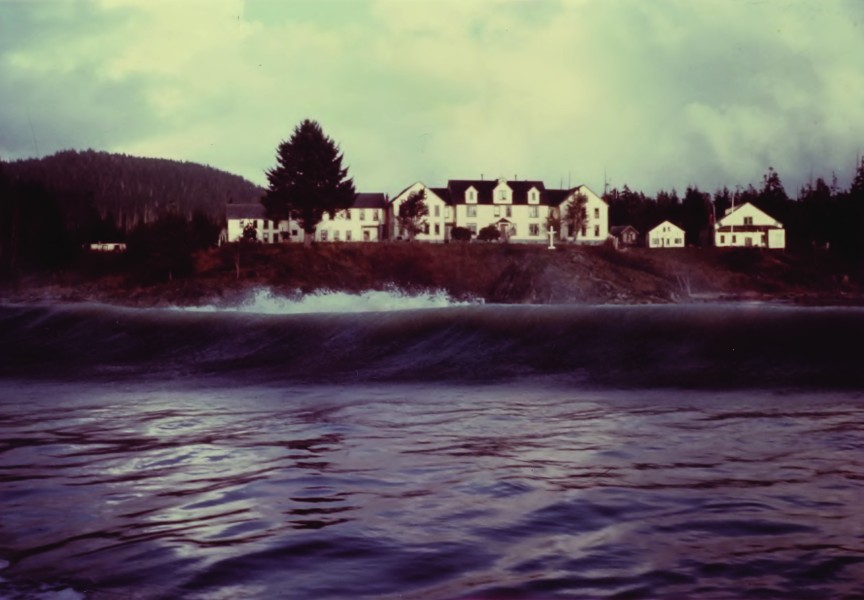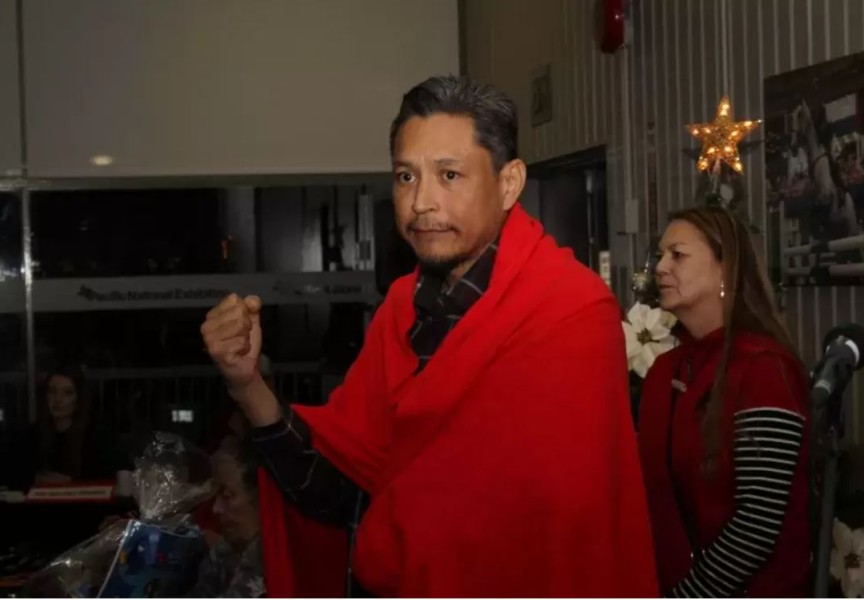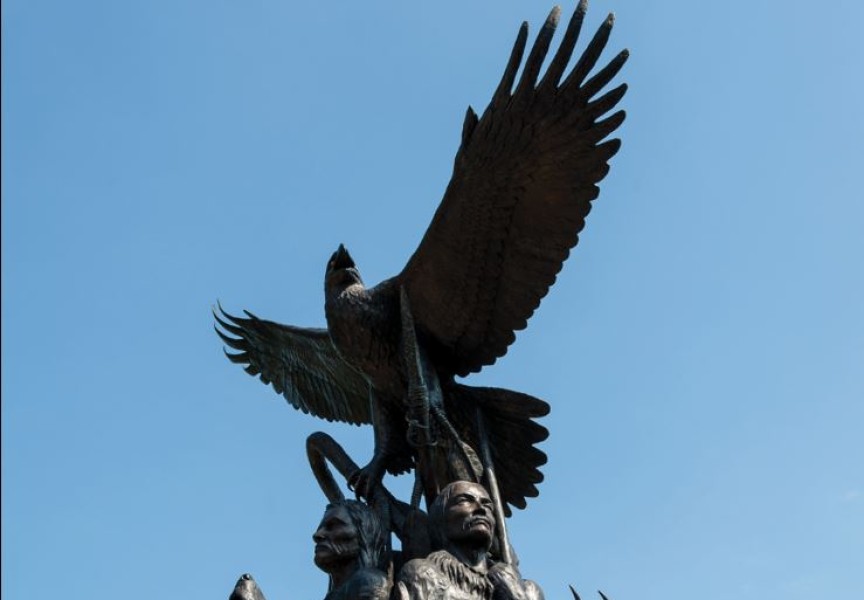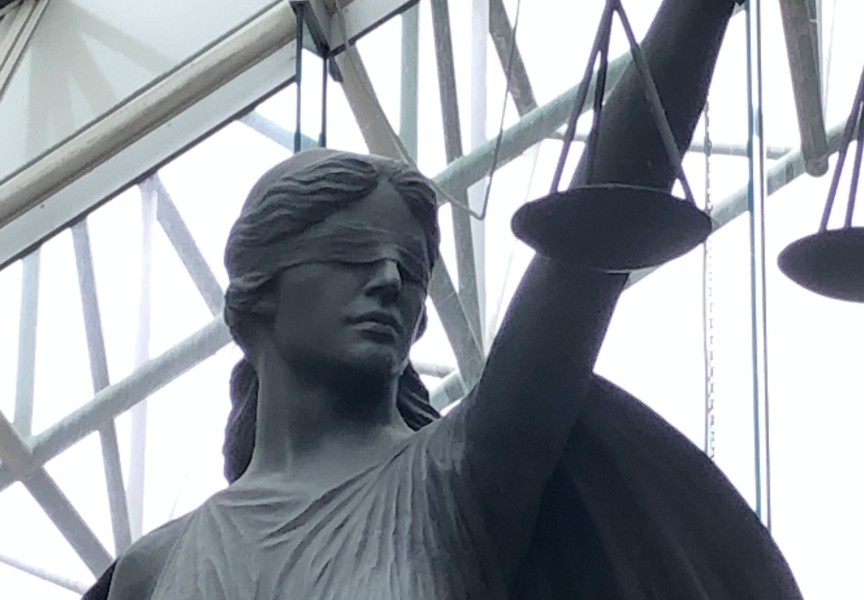As part of the Tseshaht First Nation’s larger ʔuuʔatumin yaqckwiimitqin (Doing it for our Ancestors) initiative, memorial items were removed from the bridge over the Somass River on Wednesday.
In a statement from the First Nation, the Tseshaht referenced how it is working to deal with the legacy of having a residential school in its community for most of a century.
“Tseshaht First Nation had the Alberni Indian Residential School (AIRS) placed in our territory and look to find ways to undertake our work in a respectful way, but also look for ways to commemorate those that attended AIRS,” reads the statement.
Items such as lines of children’s shoes and orange flags had remained on the bridge over the winter, the memorial collection starting when the First Nation gathered on May 31 to sing in honour of children who were buried at the Kamloops Indian Residential School.
The First Nation noted environmental considerations, as what is locally known as the “Orange Bridge” passes over the Tsuma as (Somass) River, which the Tseshaht sees as “our lifeblood”.
“Unfortunately, degradation of these memorial pieces has started to happen, threatening the fish and other wildlife ecosystems that feed our community. In addition, we want to continue to promote highway and pedestrian safety,” stated the First Nation. “Honouring our sacred responsibility as stewards of our lands and waters, we ask that our community and members of the public refrain from placing memorial items at this location to help prevent any long-term irreversible damage.”
In May 2021 the Tk’emlúps te Secwépemc First Nation sent shock waves across Canada with the announcement that the remains of 215 people had been identified at the former residential school site, a discovery enabled by the use of ground-penetrating radar.
This announcement was particularly relevant to the Tseshaht, who had the Alberni Indian Residential School on its territory from 1900 to 1973. News of unmarked graves at a residential school confirmed what many former students had known for their whole lives. Now the Tseshaht are undertaking plans to scan the AIRS site this spring and summer, approximately 100 hectares of land that will be examined once soil conditions are ideal. Discussions with a working group of AIRS survivors is ongoing.
Meanwhile, the First Nation has been fundraising for a permanent memorial structure, with over $60,000 collected so far. Information on how to contribute to the memorial fund is available at www.tseshaht.com/airs-team.

